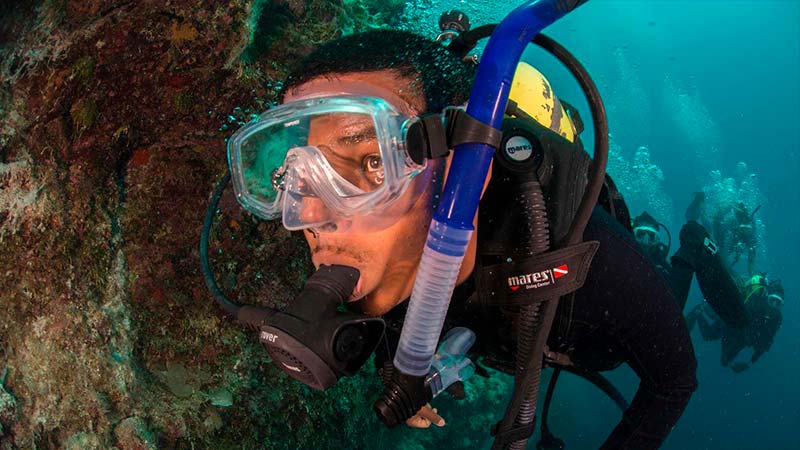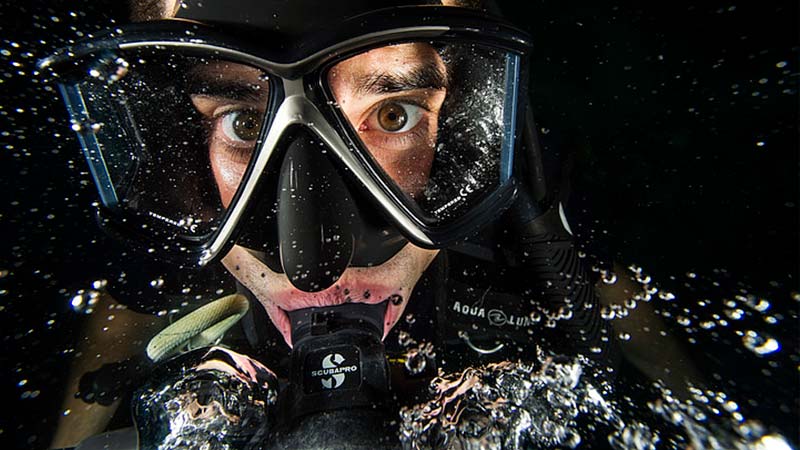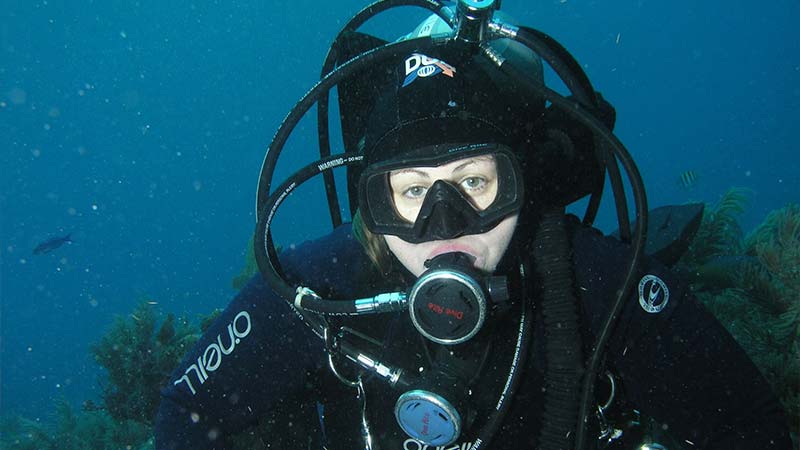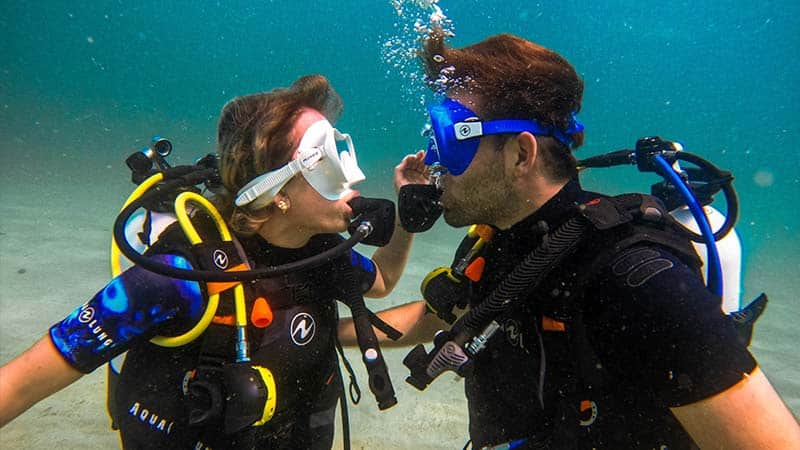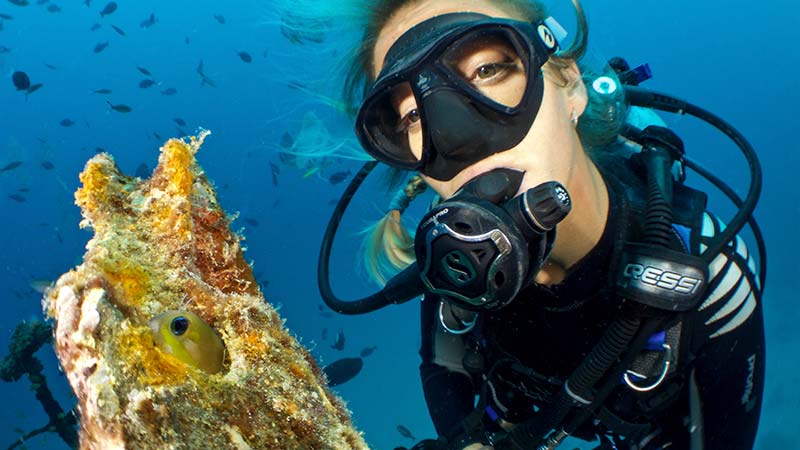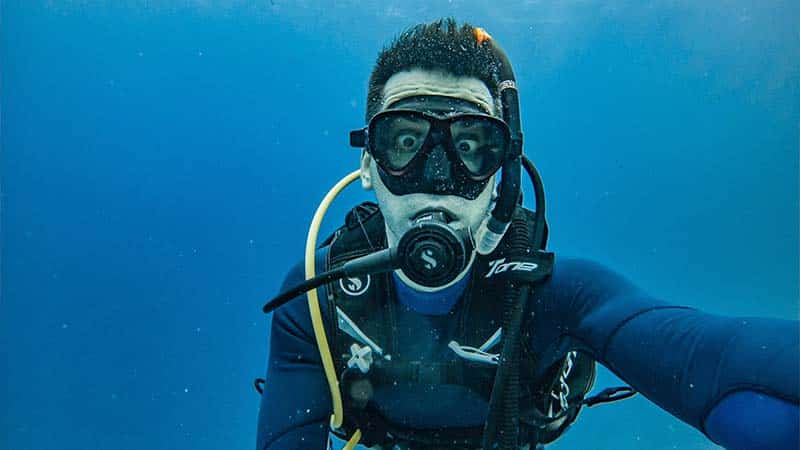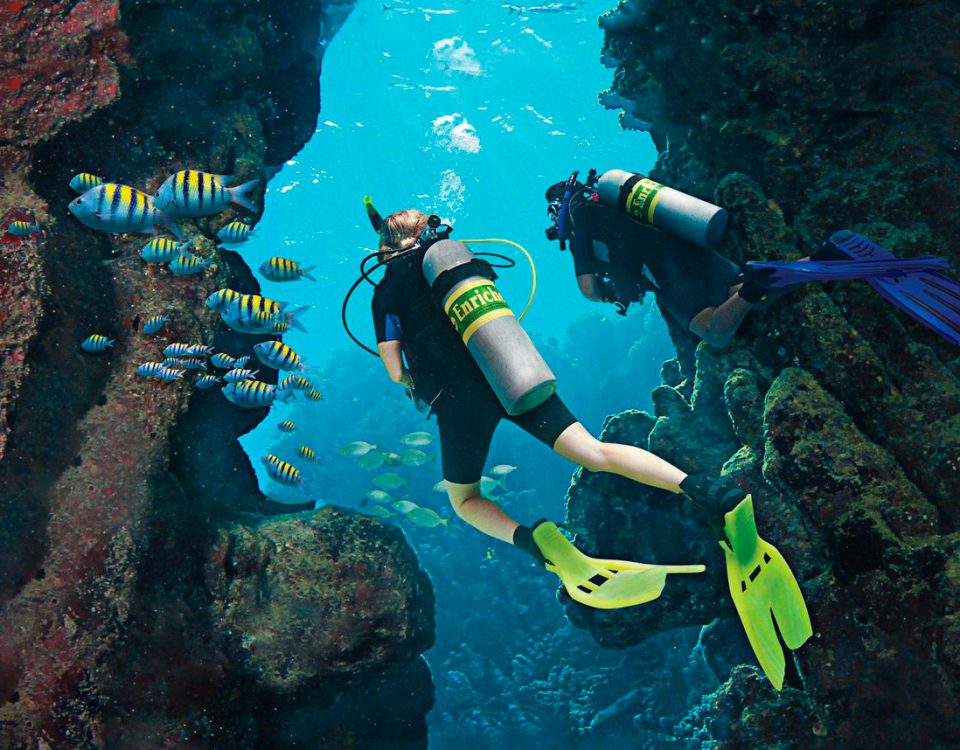1.3. Types of Diving regulators
Connection of the scuba regulator to the tank: DIN or Yoke
There are two types of connections to attach the first stage of the scuba diving regulator to the air tank: the DIN connection and the A- Yoke (also known as A-Clamp or International) connection.
The DIN connection screws directly into the valve of the tank. The DIN connection has the advantage of being smaller and able to withstand higher pressures, making it the preferred option for technical diving. Additionally, the O-ring is located in the regulator for diving, so when you screw the regulator into the tank: the O-ring is inside and less exposed. Therefore, its advocates consider it a safer connection.
The A-Yoke connection, on the other hand, uses a screw and clamp to attach the regulator to the tank valve. The A-Yoke connection has the O-ring on the tank.
There are also adapters available to connect a DIN scuba regulator to a A-Yoke tank, and vice versa.
Piston or membrane Scuba regulators.
This refers to the first stage of a scuba diving regulator.
Piston scuba regulators use a metal piston and spring to decrease air pressure as the diver breathes. They are a more budget-friendly option compared to membrane models and are easy to maintain due to their simple internal mechanics. However, they are heavier than membrane models and the movement of parts can cause quicker wear and tear.
Membrane dive regulators work by the diver inhaling, which moves the membrane to allow in high-pressure air. Once enough air is in the intermediate pressure chamber, the membrane returns to its original position and closes the valve until the next inhalation.
They offer greater protection against saltwater, cold water, and corrosion. Some models are even sealed and allow for adjustment of the intermediate pressure according to the diver’s needs. However, they are typically more expensive and can deform with use, requiring frequent membrane replacements.
Uncompensated, compensated, or overcompensated scuba diving regulators
We can also differentiate diving regulators based on whether their first stages are non-compensated, compensated, or over-compensated.
Firstly, we have non-compensated dive regulators, which vary the airflow depending on the depth and pressure in the tank. These are the most basic and tend to be more affordable.
On the other hand, there are compensated scuba regulators that maintain a constant airflow and provide a more comfortable breathing experience at any depth or pressure in the tank. These are more complex and therefore more expensive.
Finally, we have over-compensated models, which offer a constant airflow performance even at greater depths. This makes them the ideal choice for very deep dives, where the increase in gas density can affect the scuba diving regulator’s performance.




